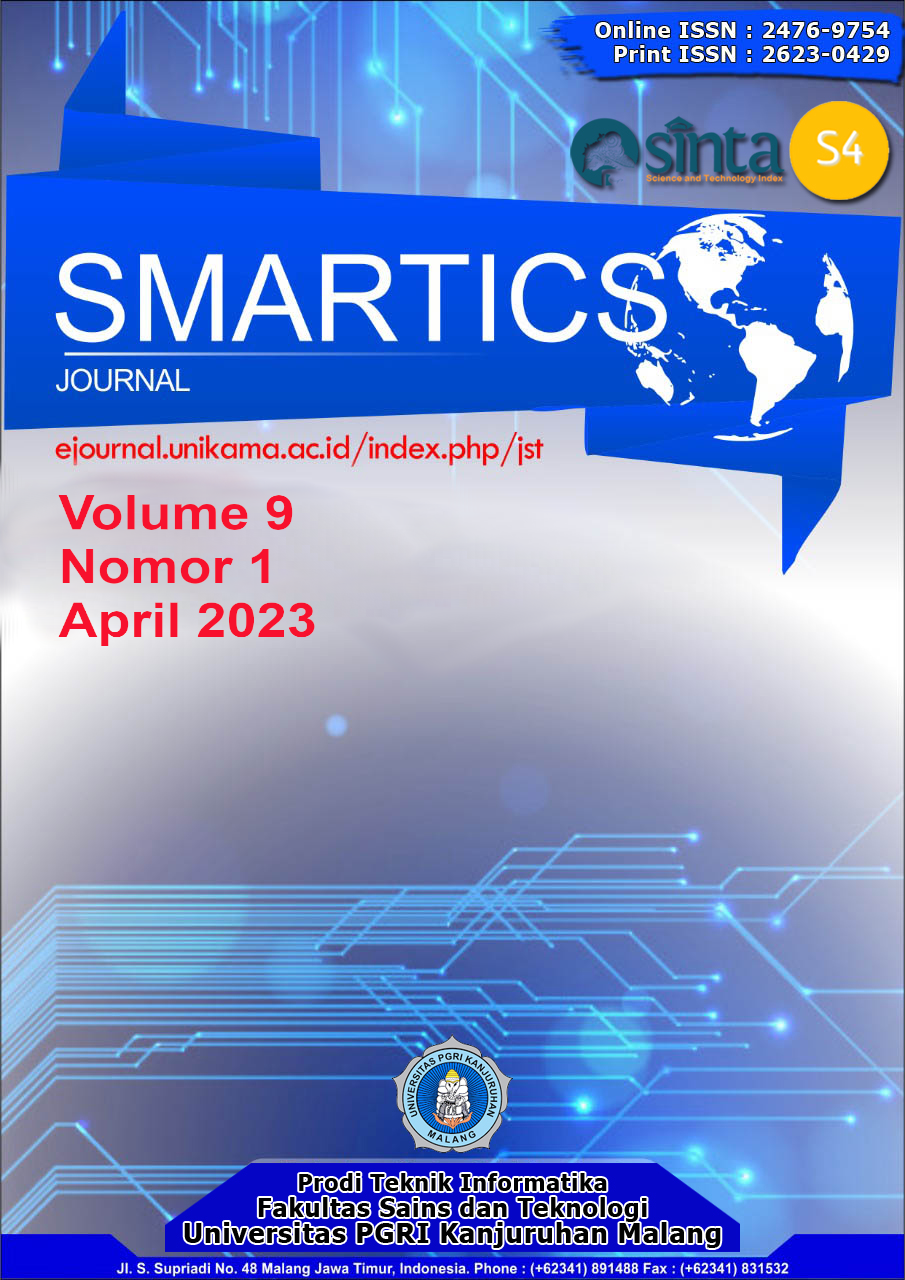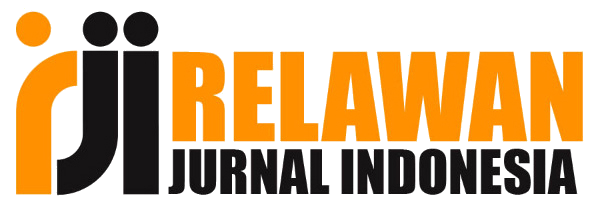Integrasi Enterprise Resource Planning Pada Lini Produksi Menggunakan Internet of Things
DOI:
https://doi.org/10.21067/smartics.v6i1.4115Kata Kunci:
Enterprise Resource Planning, Internet of Things, MQTTAbstrak
Enterprise Resource Planning the important thing for running business process in company. But along need for automation system connected to the network, integration between Enterprise Resource Planning and the Internet of Things technology is needed. On the production line, automation process needed for the notification system of readiness condition of production machine to help employees who will work can get information related to the condition of machine. The software used for the Enterprise Resource Planning system is open source software, Odoo. In the application of Internet of Things technology, the ESP32 microcontroller will be used as the overall controller of the system installed on the production line machine. Meanwhile, to connect many electronic components such RGB lights, resistors, transistors and power supplies, pcb board will be used to facilitate the stringing of components and reduce cable breakage. In addition to the protocol for sending data from the microcontroller to the server will use the MQTT protocol to publish the subscribe concept, where users will connected the system with network public ip. When the production machine is ready operate, the indicator light will turn green. Then the data will be monitored by supervisors through network that connected to broker MQTT server.
Referensi
R. W. Witjaksono, N. Ambarsari, and M. A. Sadewo, “PENERAPAN ERP MODUL WAREHOUSE MANAGEMENT PADA WAROENK LAUNDRY DENGAN METODE SPIRAL,†J. Rekayasa Sist. Ind. JRSI, vol. 2, no. 01, pp. 19–26, Apr. 2016.
F. Rahman, “EVALUASI PENERAPAN ENTERPRISE RESOURCES PLANNING (ERP) TERHADAP PENYAJIAN LAPORAN KEUANGAN (STUDI KASUS DI PT. SURYA CITRA TELEVISI),†Kreat. J. Ilm. Prodi Manaj. Univ. Pamulang, vol. 6, no. 3, pp. 109–126, Jul. 2018, doi: 10.32493/jk.v6i3.y2018.p109-126.
I. Cahyadi, “Pengaruh Kepuasan Pengguna Terhadap Transfer Teknologi pada Proyek Implementasi Sistem ERP di UKM,†Mar. 2016.
S. Wibisono, “Enterprise Resource Planning (ERP) Solusi Sistem Informasi Terintegrasi,†Dinamik, vol. 10, no. 3, 2005.
M. U.Farooq, M. Waseem, S. Mazhar, A. Khairi, and T. Kamal, “A Review on Internet of Things (IoT),†Int. J. Comput. Appl., vol. 113, no. 1, pp. 1–7, Mar. 2015, doi: 10.5120/19787-1571.
D. Castro, W. Coral, C. Rodriguez, J. Cabra, and J. Colorado, “Wearable-Based Human Activity Recognition Using an IoT Approach,†J. Sens. Actuator Netw., vol. 6, no. 4, p. 28, Dec. 2017, doi: 10.3390/jsan6040028.
K. BAYU AJI, “IMPLEMENTASI INTERNET OF THINGS MENGGUNAKAN ESP8266 DAN GEEKNESIA,†other, Politeknik Negeri Padang, 2017.
A. Z. Firdausy, “Monitoring Sensor Mesin Industri Di Area Divisi Kapal Niaga Pt Pal Surabaya Menggunakan Aplikasi Iot Berbasis Jaringan Internet Wifi,†diploma, Institut Teknologi Sepuluh Nopember, 2017.
R. Muzawi and W. J. Kurniawan, “Rancang Bangun Pengontrolan Lampu Berbasis Internet of Things Menggunakan Raspberry Pi,†Pros. SISFOTEK, vol. 2, no. 1, pp. 200–205, Sep. 2018.
A. D. ANANDA, “ODOO OPEN SOURCE FOR WAREHOUSE,†other, PROGDI TEKNIK INFORMATIKA UNIKA SOEGIJAPRANATA, 2016.
Yulia and L. W. Santoso, “Integration Between ERP Software and Business Intelligence in Odoo ERP: Case Study A Distribution Company,†Advances in Natural and Applied Sciences, 02-Apr-2018. [Online]. Available: http://dice2017.weebly.com/. [Accessed: 03-Feb-2020].
R. Y. Kim, J. R. Plummer, E. Son, and V. S. R. Pathuri, “Systems and methods for interaction with an IoT device,†US10158536B2, 18-Dec-2018.
C. Kolias, G. Kambourakis, A. Stavrou, and J. Voas, “DDoS in the IoT: Mirai and Other Botnets,†Computer, vol. 50, no. 7, pp. 80–84, 2017, doi: 10.1109/MC.2017.201.
F. Longo, D. Bruneo, S. Distefano, G. Merlino, and A. Puliafito, “Stack4Things: a sensing-and-actuation-as-a-service framework for IoT and cloud integration,†Ann. Telecommun., vol. 72, no. 1, pp. 53–70, Feb. 2017, doi: 10.1007/s12243-016-0528-5.
“Performance Characterization of the Servioticy API: An IoT-as-a-Service Data Management Platform - IEEE Conference Publication.†[Online]. Available: https://ieeexplore.ieee.org/abstract/document/7184865. [Accessed: 03-Feb-2020].
P. Jutadhamakorn, T. Pillavas, V. Visoottiviseth, R. Takano, J. Haga, and D. Kobayashi, “A scalable and low-cost MQTT broker clustering system,†in 2017 2nd International Conference on Information Technology (INCIT), 2017, pp. 1–5, doi: 10.1109/INCIT.2017.8257870.
L. O. Aghenta and M. T. Iqbal, “Low-Cost, Open Source IoT-Based SCADA System Design Using Thinger.IO and ESP32 Thing,†Electronics, vol. 8, no. 8, p. 822, Aug. 2019, doi: 10.3390/electronics8080822.
T. Ito and M. Kikugawa, “Power supply system, power transmission device, power receiving device, method for controlling power transmission device, method for controlling power receiving device, and program,†US9692249B2, 27-Jun-2017.

Unduhan
Diterbitkan
Cara Mengutip
Terbitan
Bagian
Lisensi

This work is licensed under a Creative Commons Attribution-ShareAlike 4.0 International License.






